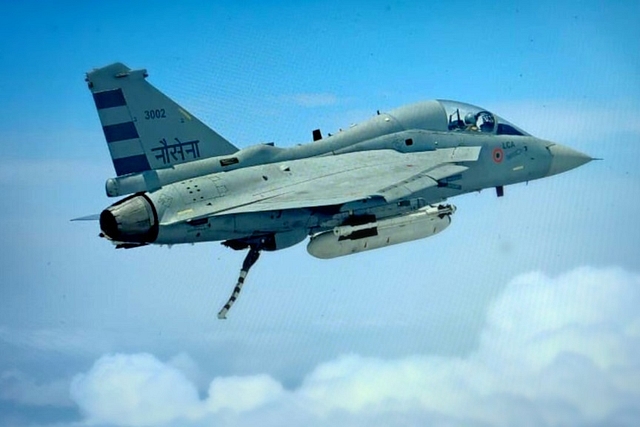
Watch: Naval Variant Of LCA Tejas Flies For The First Time With Tailhook Used For Landing On Aircraft Carrier
The carrier version of India's in-service Light Combat Aircraft (LCA) Tejas - LCA Navy - flew with a tailhook for the first time on 23 July, Livefist has reported.
A tailhook, also called arresting hook, is a device attached to the rear part of fighter jets which operate from a carrier. It is used to achieve rapid deceleration when a fighter jet lands on the deck of an aircraft carrier at sea.
In December 2016, the Navy had announced that it will not induct the fighter jet as it was “overweight” and unsuitable for carrier-operations. The fighter, which is "too heavy", does not meet the "thrust-to-weight requirement to take off with a full fuel and arms load" from an aircraft carrier, the Navy had said.
"We will continue to support Defence Research and Development Organisation (DRDO), Hindustan Aeronautics (HAL) and Aeronautical Development Agency (ADA) but the naval LCA in its present form unfortunately does not meet our qualitative requirements for carrier capability," Chief of the Naval Staff, Admiral Sunil Lanba, had had told reporters at a press conference back then.
However, Lamba had said that the Navy will continue to support the project.
"We are committed to indigenisation. We have supported the LCA Navy project and we will continue to support it," he was quoted as saying.
Now, according to Livefist, the LCA Navy project has been “reviewed and revived” by the Defence Ministry under Nirmala Sitharaman.